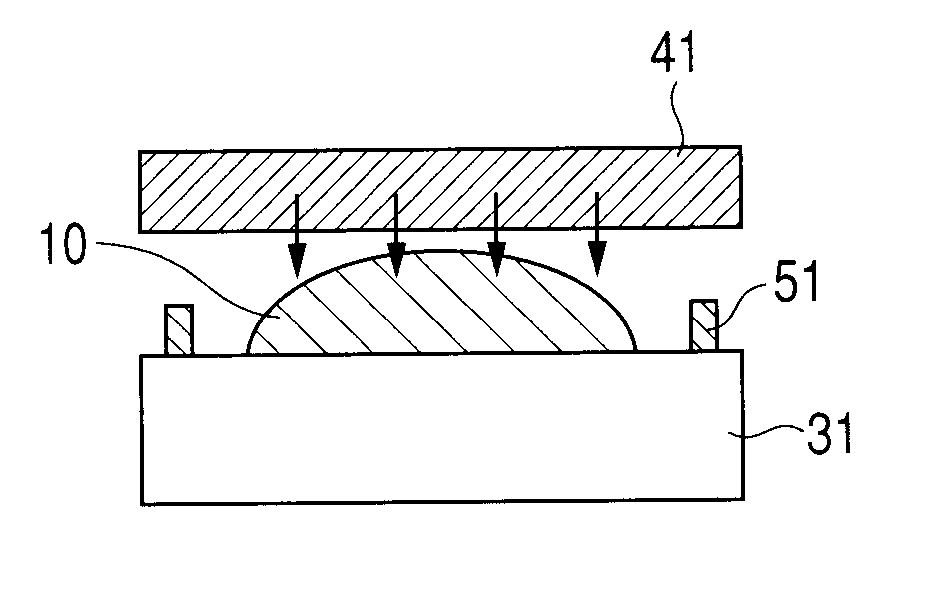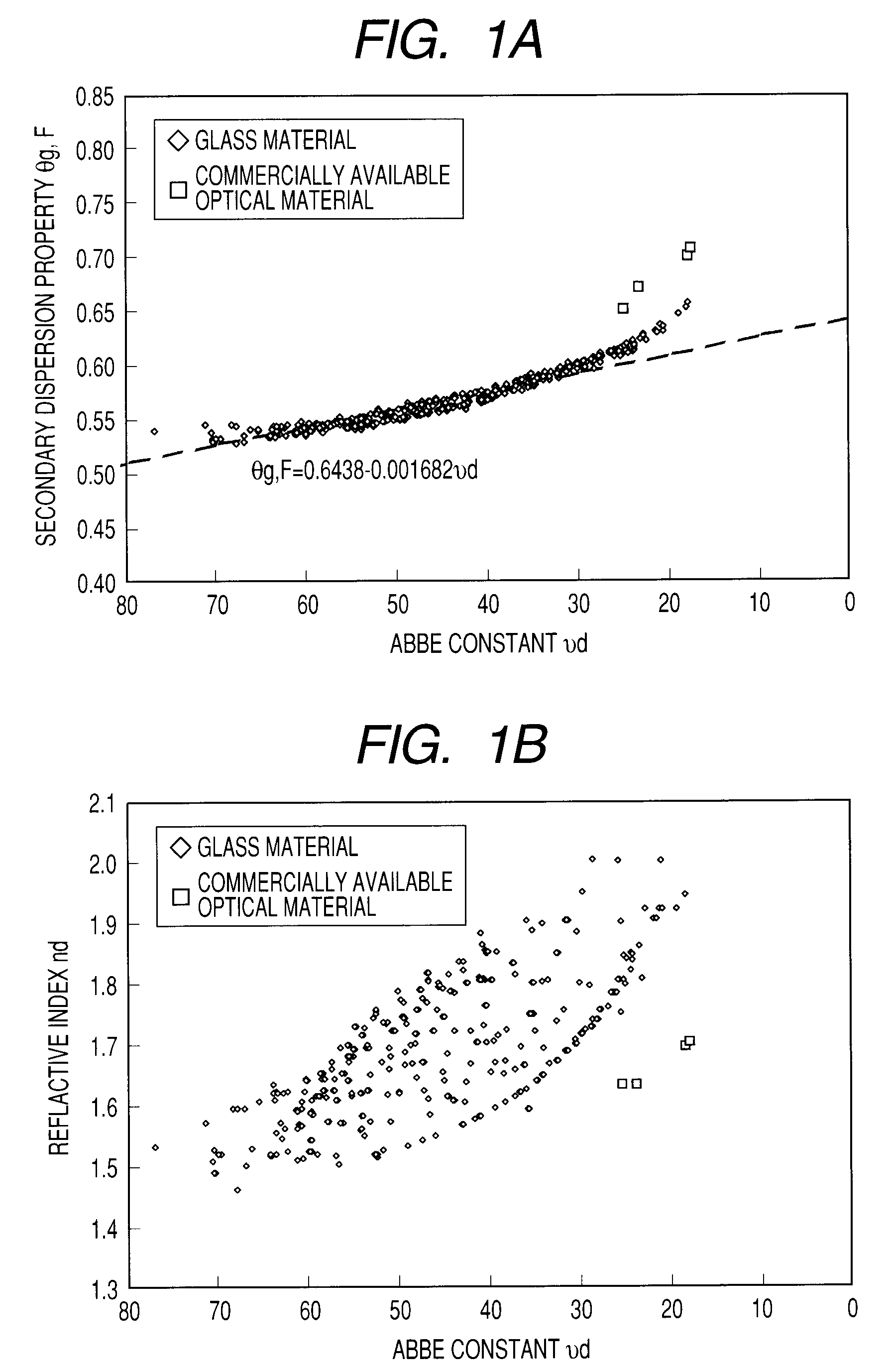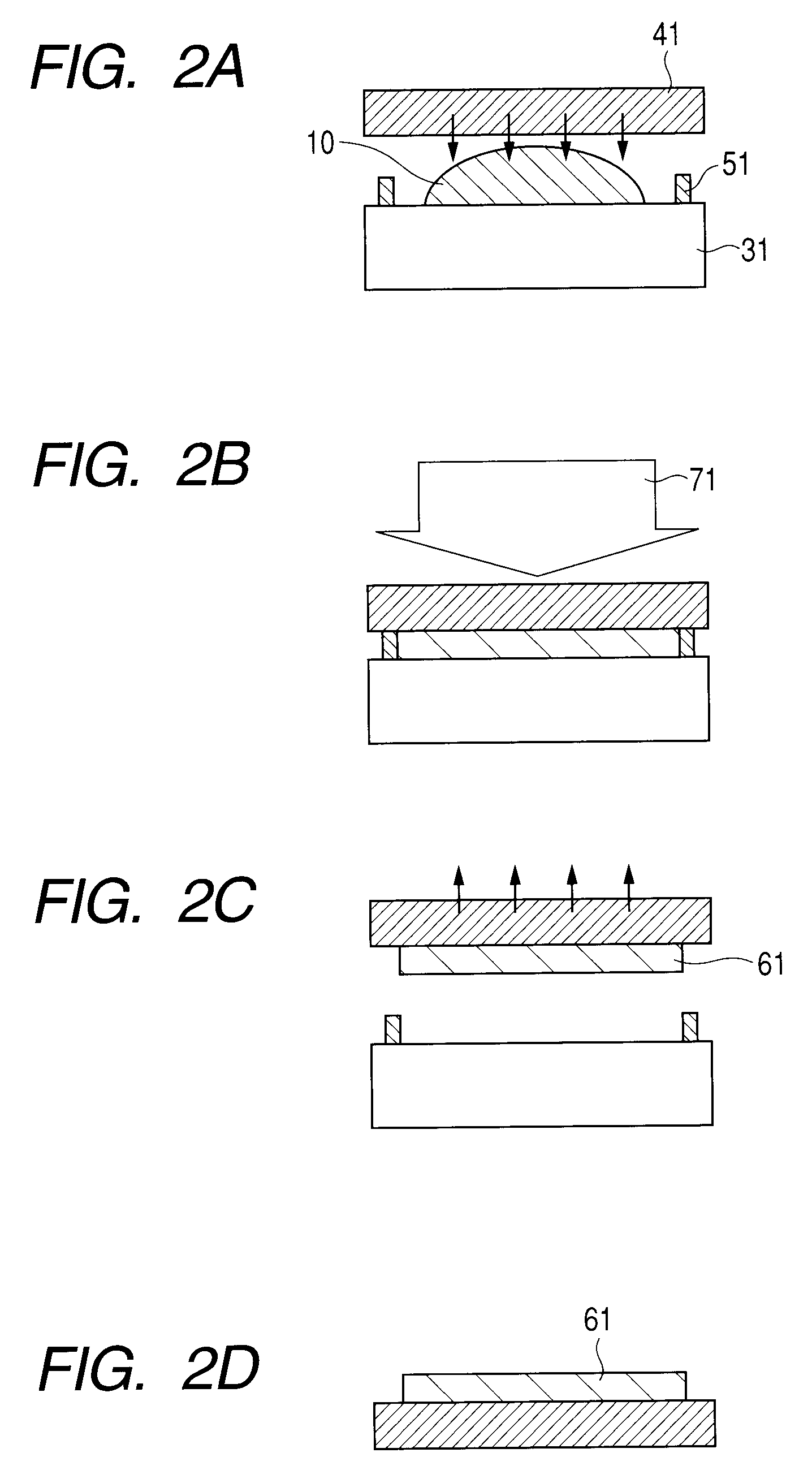Optical material and optical element
- Summary
- Abstract
- Description
- Claims
- Application Information
AI Technical Summary
Benefits of technology
Problems solved by technology
Method used
Image
Examples
embodiment 1
[0033]A first optical material according to the present invention includes a polymer of a mixture which at least contains a sulfur-containing compound, a fluorene compound, and an energy polymerization initiator.
[0034](Sulfur-Containing Compound)
[0035]The sulfur-containing compound included in the first optical material according to the present invention is a compound containing, in a molecule, at least one kind of group selected from the group consisting of a sulfide group, a sulphone group, a sulfoxide group, a thiol (mercaptan) group, and a thioester group. In particular, in order to obtain a resin which may be cured by energy such as light or heat, the compound desirably contains a polymerizable functional group such as an acrylic group, a vinyl group, or an epoxy group.
[0036]Specific examples of the sulfur-containing compound include bis(4-vinylthiophenyl)sulfide, bis(4-methacryloylthiophenyl)sulfide, p-bis[β-(meth)acryloyloxyethylthio]xylylene, 4,4′-bis[β-(meth)acryloyloxyethy...
example 1
[0057]Bis(4-vinylthiophenyl)sulfide (MPV) which is the sulfur-containing compound and the fluorene compound which is expressed by the chemical formula (1) and has the fluorene skeleton were compatibly mixed at weight ratios of 1:1, 1.5:1, 2:1, and 2.5:1. A photo radical polymerization initiator, 2-hydroxy-2-methyl-1-phenyl-propan-1-one was added to each of the resin component mixtures at 3% by weight to obtain an optical material 11 (weight ratio is 1:1), an optical material 12 (weight ratio is 1.5:1), an optical material 13 (weight ratio is 2:1), and an optical material 14 (weight ratio is 2.5:1), which each are made of only resin in the present invention.
[0058]Next, molded members were obtained from the optical materials 11 to 14 by the manufacturing steps illustrated in FIGS. 2A to 2D. As illustrated in FIGS. 2A to 2D, each of the optical materials 11 to 14 was sandwiched and fixed between the flat-shaped mold 31 and the glass substrate 41 using the spacer 51 (1 mm in thickness)....
embodiment 2
[0060]A second optical material according to the present invention includes a mixture which at least contains the sulfur-containing compound, the fluorene compound, the polymerization initiator, and metal oxide fine particles. Note that the sulfur-containing compound, the fluorene compound, and the polymerization initiator are the same as in Embodiment 1.
[0061](Metal Oxide Fine Particles)
[0062]Specific examples of the metal oxide fine particles included in the second optical material according to the present invention can include a titanium oxide, a niobium oxide, a tantalum oxide, and a tungsten oxide. Specifically, TiO2, NbO, Nb2O5, Ta2O5, or WO3 is used. If necessary, the metal oxide fine particles may be complex oxide fine particles with Si, Ti, Sn, Zr, or Al. In the following description, the “metal oxide fine particles” are also referred to as the “fine particles”.
[0063]An average particle diameter of the metal oxide fine particles is desirably a particle diameter which does n...
PUM
| Property | Measurement | Unit |
|---|---|---|
| Length | aaaaa | aaaaa |
| Length | aaaaa | aaaaa |
| Fraction | aaaaa | aaaaa |
Abstract
Description
Claims
Application Information
 Login to View More
Login to View More - R&D
- Intellectual Property
- Life Sciences
- Materials
- Tech Scout
- Unparalleled Data Quality
- Higher Quality Content
- 60% Fewer Hallucinations
Browse by: Latest US Patents, China's latest patents, Technical Efficacy Thesaurus, Application Domain, Technology Topic, Popular Technical Reports.
© 2025 PatSnap. All rights reserved.Legal|Privacy policy|Modern Slavery Act Transparency Statement|Sitemap|About US| Contact US: help@patsnap.com



